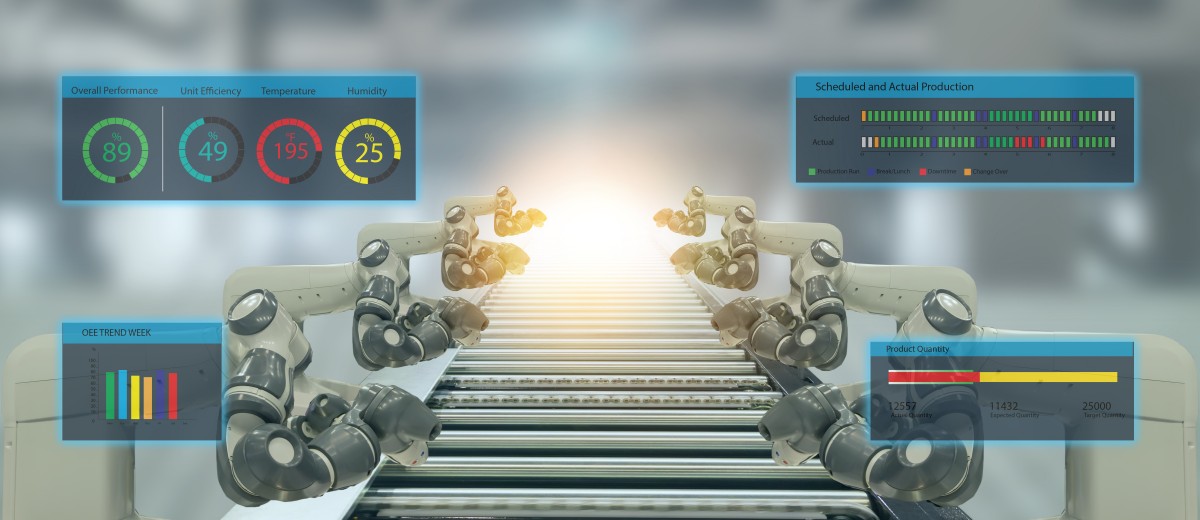MES Now!

By Michael Ford, Aegis Software
Almost every manufacturing execution system (MES) solution on the market today, comes with many forms of compromise that impact deployment and limit potential values, which become increasingly significant over time. As we now turn to such solutions to deliver the next chapter of digital manufacturing and Industry 4.0, what should we be looking for, and what should we definitely avoid? Is it still the case that holding off making the decision is the best way forward? What should our modern “MES Now” strategy be?

Michael Ford
It would be quite apt to add an additional letter. The world of MES has really got itself into a mess. Historically, some larger companies would think that they had the resources to develop a corporate MES solution by themselves, and in so doing, create differentiation, while smaller companies think that for them, MES is all too much. Not many people feel that they have to design and build their own personal cars today, with makes and models that suit almost all budgets. There have been many step-changes over the last few years in computer and digital technologies, that have meant that the legacy MES staples in the industry have been left behind, while so many new companies have come into the market lacking domain expertise, imagining that the “Computers in Manufacturing” challenge, is simply addressed by adoption of new technologies alone. All of these companies are making the same fundamental mistakes, over and over again, not understanding customers’ real needs, present and near-future. Insert good news here, but sadly, for most legacy solutions in their present form, the end of the road is coming.
It is not something that a legacy solution, whether internally developed or commercial, can resolve. It is a core technology issue. The very first computerized systems in manufacturing were “point solutions”, designed to satisfy a simple specific need and requirement, which they did admirably. As the utilization of computers in manufacturing grew, it became clear that point solutions had a limited future. My own personal first ever manufacturing software development in the 1980s, was an automated closed-loop feedback system, that extracted test results from the ICT process, identified root-cause, and displayed simple, personalized graphs and information directly in front of each operator on the line in real-time, showing their results. I thought that the result was amazing, as within six months the mount defect rate had reduced from 2500ppm to 25ppm. Was there fanfare and celebration? No. The management instead decided that it was time to discard the system, as they no longer saw the need, defects simply were no longer being made. You can guess what happened next. It illustrated to me that no matter how effective manufacturing software is, the cost of use is almost as significant a factor for continued adoption, as benefits obtained.
As the number of point solutions in manufacturing grew, including in such areas as material management and warehousing, engineering, quality, execution and flow management, test and repair, productivity measurement, compliance and conformance assurance etc., associated running costs, especially as different systems required the same data to be entered, became too high to bear for a manufacturing organization, and so a ceiling of adoption was hit. Different companies continue to have ceilings in different places depending on how they perceive ongoing values, some quite high, but most others, are quite low.
The idea of an integrated solution, that is, one solution that replaced many point solutions, became attractive, as there would be a common source of data, reducing data input and transfer costs. While this sounded good in theory, it would be only the most forward thinking of companies that would create a true, single platform from scratch, that would offer true commonality of data. The alternative, the path that most other companies chose, was to combine existing point solutions into a platform environment that appeared to be one. Internally developed solutions became connected behind the scenes through a fragile, spaghetti-like chain of data links, many manually driven or triggered, that reduced data entry costs significantly, but, created a support nightmare, with reluctance to change anything in case the whole thing fell apart. Commercially, mainly through acquisitions, it was found to be easier and quicker to simply link existing point solutions, even with different background, architectures and technologies, so that it looked as though there was integration. In reality, unbeknown to customers, the same spaghetti-like links were working in the background, exchanging data through internal interfaces rather than truly sharing a common dataset. With different point solutions storing and using similar data in slightly different ways, evidence of this can be seen today in many long established integrated platforms, as different areas of the tool behave in different ways, use differing terminology, and unexpected inconsistencies occurring whenever a certain set within the plethora of configuration options are changed.
In most cases, these solutions, both internally developed and commercially stitched together have survived without anyone really noticing that there is not actually a single code-base and dataset. We are living however in the age of rapidly increasing expectations of value from “big data”, which of course does not necessarily refer to the amount of data, but rather to the many different, and increasing facets of manufacturing that the data represents covering all use-case applications. Database and platform structures that have been integrated “as needs arise”, are finding it exponentially more difficult as time goes on to support the expansion of manufacturing data, as demanded by customers, looking to create as much value from digitalization as possible.
Moving from the technical realm to the commercial side, vendors of integrated solutions have succeeded in confusing customers as to what MES is, which is something many take full advantage of. Each solution was the product of whatever they had or could find to put together, so of course, each company ended up with different sets of functionality. The role of their marketing team has been to convince customers that their particular combination of MES functionality is the best, leading to many years of confusion as to what an MES system, should or should not do. Successful marketers turn problems into solutions, but this should only be in the interest of the customer, rather than at their expense. Many vendors however, in an attempt to disqualify competitors, are keen to point out the “key” features that they have and the competitor does not, even if it is something for which the customer has no real immediate need. Should the reverse case happen, and the competitor point out functionality that the first company does not have, then they will often respond by saying that if the customer feels they need this, then they will provide a superior solution. The posturing is typically based on, “extensive expert investigation” into the customer need, that they need (deserve) a more sophisticated and bespoke solution than any competitor can provide, one which will elevate and differentiate the customer, so much so, that they agree to bear the development cost for what will be a bespoke solution, tailored to the specific customer needs while also being simplistic, inflexible, and expensive to support and maintain into the future. The bigger the company involved, the more highly compensated the salespeople are, and the more the perception of available R&D resource is, though this is in reality often not the case when considering the specific product area.
The next chapter of digital manufacturing is currently taking shape. Data can now be collected from, and exchanged between, any and all processes and machines across the whole of the shop floor, using IIoT technology featuring one standard language definition, in the form of the IPC Connected Factory Exchange (CFX). Having a modern ontology within a genuinely single manufacturing software platform, leads to far greater values from data, together with significantly reduced costs of ownership and an increase in reliability. Having every aspect of manufacturing data resident within the holistic, purpose-built database structure, allows the creation of context that connects the various datapoints to create events that are completely described, identifying and associating causes, influences, actions and consequences, such that their impact is measured and made visible, information ready to be used at any time, in an infinite number of ways by the many individual algorithms that the modern MES uses to manage production in an intelligent way, bringing suggestions and solutions for issues before they become significant, rather than simply reporting problems and losses.
By definition, there cannot be Industry 4.0 Smart factories without the use of software, the associated expectations of which reside within this mess of MES solutions. As the market is recovering from the initial onslaught of COVID-19, many in the industry are adapting to meet the newly forming customer demand patterns. We can expect product market strategies to change, in terms of how and where manufacturing is done, as well as customer expectation with regards to environmental concerns, influencing product longevity and reliability. As volumes and competition resume over time, the opportunity exists now to get ahead, to reinvent and adopt the latest digital best practices, armed with a modern MES solution, free from the burden of legacy technical issues that are covered up by creative sales practices. To buy a Smart MES solution, you have to be a smart customer, to recognize the limitations that legacy technologies represent going forward, to see through the sales and marketing techniques designed to draw you in and overlook certain issues. Have an honest discussion within your peer teams, including engineering, planning, supply-chain, quality, and of course production management. Focus on the non-physical bottlenecks that exist across the organization, the foreseen needs of customer demand patterns, the development of new best practices incorporating a new level featuring the interaction between everyone. The final answer is often a very simple one, based on suppliers offering Smart Industry thought-leadership, rather than simply immediate customer revenue optimization. A solution based on the latest forward-looking IIoT technology, with the support for the biggest data you can imagine, on a genuinely single code-based platform. Your golden ticket to coming out of whatever global issues are thrown at us, putting you in the best position possible. MES Now!












